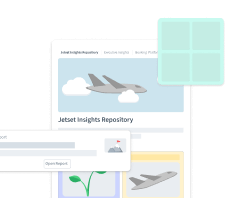
Leading In and With UX Research
Growing research teams show a company’s commitment to user-centered and insight-driven decision-making. With growing teams, research leadership becomes a central topic. And with user research often having the most comprehensive picture of the user, the question of how research can lead other disciplines also comes up.
Research Leadership is a broad and integrated topic, but somehow the different facets rarely make it in UX research conference programs or dedicated articles. So we brought together three experts, who are research leaders themselves, to share their perspectives on research leadership.
This is a summary of the expert panel on research leadership that you can watch in its full length here.
The panelists



What makes a great research leader?
Some takeaways from the conversation:
A successful leader is eventually becoming obsolete by ensuring the team has what it needs to grow, feels empowered, and is able to do excellent research. Anna describes the aspiration of building out a team that is so strong and well-positioned that the role of the leader may not be as necessary anymore.
Being a research leader is also about advocating for user research, ensuring research has its forum in an organization. It helps when you come from a research background and understand what it takes to build a robust research program.
As a research leader, you have to help your team withstand scrutiny. For example, people may try to discredit UX research data that requires a considerable shift in the planned direction or is not in line with people's opinions.
Coming from hands-on research to a leadership role: what was the biggest change?
Here are some thoughts around the research background of a researcher leader from the panel talk:
It's a significant shift from hands-on research practice to a position where you manage individual contributors or even managers who manage individual contributors.
Especially the output becomes way more intangible. This can be challenging to acknowledge in the first place, as running research studies, bringing insights into a report, and sharing them with the organization is a relatively tangible output.
You will go from making people successful by contributing insights and data about the customer's needs to making people successful by providing tools, resources, and support coaching. It's a mindset shift, but it's still about helping people make decisions.
As a research leader, you will need to figure out when to let go and coach instead. It's about enabling people to explore solutions and grow in their way.
Growing into a research management role is not the only way to develop your research career. Anna describes, that she sees a lot of different ways to grow a research career:
/f/99166/2880x1800/4c1e3ce209/screenshot-2022-03-24-at-20-19-33.png)
What have been the most challenging moments as a UX research leader and how did you overcome them?
It can be hard to realize that your research data is not clean enough.
It's challenging to deliver evidence-based news that people don't want to hear but could harm the organization if being ignored.
People may overestimate how much is under the control of the research leader and expect you to find a solution for something they are struggling with or change the organization's culture more directly. This is challenging to handle as a leader in research as you will learn that this process is not straightforward.
The way to go is to build trust with the team and be as transparent as possible.
How do you communicate the value of UX in the Organization?
One person at a time. Find the people who will listen first, and let them become allies for research by helping them to make their decisions with more confidence. They may want to have research firmly in their workflow from then on.
Use all available tools and formats to bring research into the conversation and educate about UX research continuously, from 1:1 discussions to seminars. Build relationships with people from other disciplines continously.
John developed the approach of bringing in the value of user research by asking questions about product decisions:
/f/99166/2880x1800/12a9fda634/john-pagonis-1.png)
Always be unapologetic about your research findings: Even if you feel the pressure to defend your work, keep in mind that there's no need to defend research evidence. Instead, it's more about being prepared to answer questions about your research when getting challenged and eventually expecting that people may not understand user research insights in the first place.
How do you grow an environment for the UX team to grow successfully?
Klara described that this is about a mix of different things: Ensuring having the right tools in place, offering a support system for new joiners in the research team, providing space for the team to do things in their own way, ensuring to coach each individual but also the team as a whole to understand where the team is going, and most crucially: building trust with the team.
For Klara, this has to do with being your authentic self and also creating space for others to be that authentic self as well:
/f/99166/2880x1800/1bc7fd858a/screenshot-2022-03-24-at-20-19-00.png)
Additionally, jointly creating UX measurements to prove the impact of the UX research work in the broader organization will support the team development and eventually bring the team more budget as a side effect.
Want to read more? Check out our articles about Enterprise UX Research and how to communicate the Value of UX as a researcher.






/f/99166/1664x936/7ccc77b422/thumbnail-ar-leadership.png)